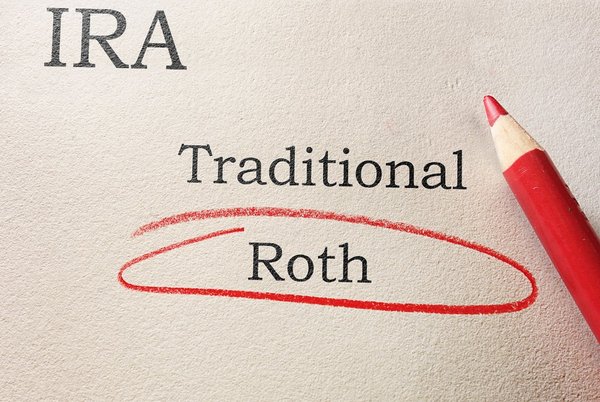Roth 401(k)s and Roth IRAs are retirement savings accounts that allow you to contribute with after-tax dollars and take tax-free withdrawals in retirement. They are an alternative to traditional 401(k)s and traditional IRAs, both of which allow pre-tax contributions but require you to pay tax on withdrawals.

While both Roth accounts make it possible to defer taxes until retirement, there are some important differences between a Roth 401(k) and a Roth IRA:
- Eligibility: Because of income limits, higher earners cannot contribute to Roth IRAs.
- Individual/employer accounts: Roth 401(k)s are administered by employers, while Roth IRAs are opened by individuals.
- Contribution limits: Roth 401(k)s have higher contribution limits than Roth IRAs.
The Roth concept
Roth 401(k)s are less common than traditional 401(k)s, but an increasing number of employers offer them. In fact, while just 46% of employers offered Roth 401(k)s in 2012, 70% provided this option to employees in 2018, according to Willis Towers Watson.
Before Roth 401(k)s became prevalent, Roth IRAs were often the only option for workers preferring to defer tax savings for retirement contributions. Because both Roth IRAs and Roth 401(k)s accept only post-tax contributions, neither provides a tax break in the year contributions are made.
For example, if you have $60,000 in taxable income and contribute $5,000 to a Roth IRA or Roth 401(k), you still have $60,000 in taxable income, and your take-home pay is reduced by $5,000.
With a traditional 401(k) or traditional IRA, the same $60,000 in taxable income and $5,000 contribution reduces your taxable income to $55,000. If you're in the 22% tax bracket as a single filer, that will save you $1,100 in taxes and reduce your take-home pay by only $3,900.
It is important to note that while a Roth IRA is an individual account that doesn't receive employer contributions, employers can make matching contributions to a Roth 401(k).
Pros and cons of the Roth 401(k) and the Roth IRA
The table below shows the pros and cons of both account types.
| Account Type | Pros | Cons |
|---|---|---|
| Roth 401(k) |
Roth 401(k)s have higher contribution limits than Roth IRAs. There are no income limits for eligibility. Employers often match a portion of contributions |
Not all employers offer Roth 401(k)s. You have a narrow choice of investment options, and some might involve steep fees. You need an employer to open one. |
| Roth IRA |
You can open one even if you don't have access to a workplace retirement plan. You'll have a broad range of investment possibilities, including virtually any stock, bond, or fund. There are no withdrawal requirements, and the account can be passed on to heirs. You can open an account at a brokerage that charges low fees. |
Roth IRA contribution limits are lower than Roth 401(k)s. No matching contribution from employers is available. High earners can't contribute to Roth IRAs. |
Which is best for your retirement goals?
First things first: You don't have to choose between a Roth IRA and a Roth 401(k). You can contribute to both. This can be the best option if your employer offers a match but you'd prefer a broader choice of investment options than a Roth 401(k) provides. In this scenario, you'd want to contribute enough to get the match and then put the remainder of your retirement funds into a Roth IRA until you hit the contribution limits.
Unfortunately, not everyone has a choice of Roth accounts. If your workplace doesn't offer a Roth version of its 401(k), the only way for you to get the benefits of a Roth is to contribute to a Roth IRA.
On the other hand, if your income is too high for you to contribute to a Roth IRA, a Roth 401(k) may be your only choice if you prefer to take tax-free withdrawals from your retirement account rather than make pre-tax contributions to it.
If your employer does not offer a match and you're eligible for both a Roth 401(k) and a Roth IRA, you'll need to weigh the pros and cons of each account type. If you want more investment choices, opt for a Roth IRA. But if you would rather have the convenience of a workplace account and don't mind a more limited choice of investment options, a Roth 401(k) is your best bet.







